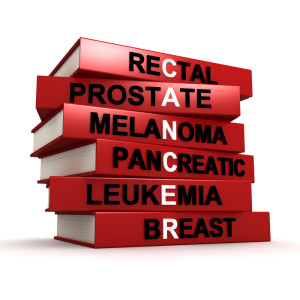Written by Patrick Massey, MD, PhD. Mistletoe may play an important role in the treatment of not just pancreatic cancer but many other cancers as well.
 At this time of the year, the plant mistletoe is widely displayed along with other holiday items such as wreaths and Christmas trees. Usually, standing under the mistletoe with someone necessitates a kiss.
At this time of the year, the plant mistletoe is widely displayed along with other holiday items such as wreaths and Christmas trees. Usually, standing under the mistletoe with someone necessitates a kiss.
Many of us may not realize how this tradition came about, but mistletoe has been important in northern European cultures for many years. Even though a kiss may be medicinally beneficial, mistletoe seems to have some potent activity as an anticancer agent.
Mistletoe is found in Europe, North Africa, Australia and Asia. It can also be found in the United States, however it is not native to North America. It is a parasitic plant without roots and grows on trees.
Mistletoe has been used in fertility rituals by the ancient Druids. In one Norse story the Norse god Loki tricked the blind god Hodur to kill another Norse god Balder. After that, as some form of compensation, mistletoe was considered to be a symbol of friendship and peace.
During the Middle Ages in England, it was customary to hang mistletoe from a doorway or a ceiling as a symbol of the Trinity of the Catholic Church. It was also customary for visitors to embrace both the master and the mistress of the house underneath this symbol. This evolved into kissing under the mistletoe. Mistletoe is also an important part of culturally-based medical systems in northern Europe as a treatment for cancer.
Currently mistletoe is not approved by the FDA for the treatment of cancer. However, in the medical literature there are over 600 medical studies and articles discussing the many anticancer compounds found in mistletoe.
One interesting medical study, published in the medical journal BMC cancer, looked at the survival of 240 patients with pancreatic cancer. The results were intriguing. Those patients who only used mistletoe as their therapy doubled their survival compared to those doing nothing (from 2.5 months to 5.4 months). Those patients who combined chemotherapy with mistletoe saw an 80 percent increase survival time compared to those who had chemotherapy alone (from 7.4 months to 12.1 months). There were no adverse interactions between the mistletoe and chemotherapy.
Another study published in 2014 in the German medical journal Deutsches Artzeblatt International involving 220 end-stage pancreatic cancer patients indicated a significant improvement in quality of life measures for those patients using mistletoe.
This included a significant reduction in pain and fatigue as well as improved appetite, reduced insomnia and a trend toward weight gain. There were no complications between mistletoe and chemotherapy.
Although mistletoe is considered to be a positive symbol of the holiday season, it’s more important role may be in the treatment of not just pancreatic cancer but many other cancers as well.
- Patrick B. Massey, MD, PhD, is medical director for complementary and alternative medicine at Alexian Brothers Hospital Network and president of ALT-MED Medical and Physical Therapy, 1544 Nerge Road, Elk Grove Village. His website is www.alt-med.org. Posted December 27, 2016.
